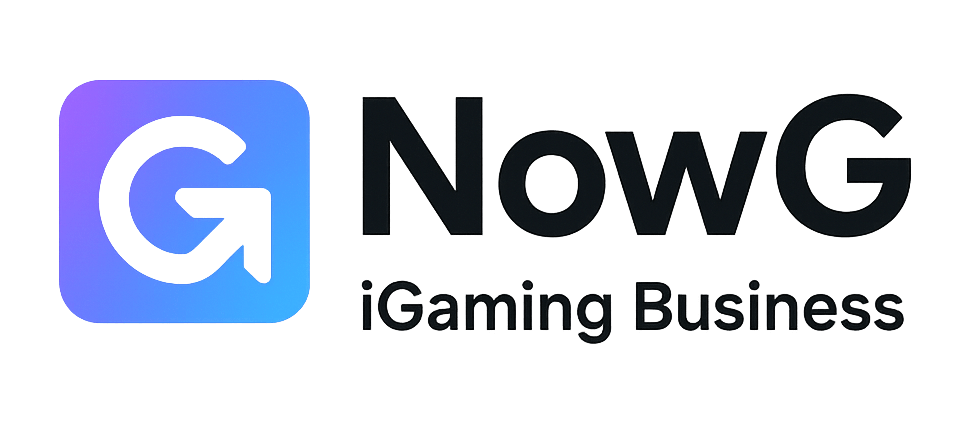Partner ecosystems went from “nice-to-have channels” to the growth operating system for B2B and B2C brands. In 2026, your customers expect integrated solutions, your sellers need warm intros, and your product needs complementary apps and services.
This guide explains what a partner ecosystem is, why it matters, how to design the strategy, and which tools actually help you scale—without melting your team’s brain.
What is a Partner Ecosystem (and why it beats a single channel)
Partner ecosystem = the network of organizations that influence, sell, implement, or extend your product: resellers, referral partners, technology partners (integrations), agencies/SIs, marketplaces, influence partners (communities, creators), distributors, and strategic alliances. Unlike linear channels, ecosystems are multi-directional: partners co-sell with you, co-market with each other, and co-build with your product team.
💡 Rule of 3 I tell founders in 2026: Ship integrations that your buyers already use, enable 10 partners deeply (not 100 shallowly), and measure influence as hard as you measure revenue.
Ecosystem vs. Channel: the quick contrast
| Dimension | Traditional Channel | Partner Ecosystem |
|---|---|---|
| Motion | Resell/Distribution | Co-sell, Co-market, Co-build |
| Value | Revenue booked | Revenue + Influence + Retention + Product velocity |
| Structure | Pyramid tiers | Networks & clusters |
| Systems | PRM only | PRM + Ecosystem data mapping + Marketplace + Partner marketing automation |
| Success horizon | Quarterly | Quarterly + Annual + LTV (renewal/expansion) |
Partner Ecosystem Management (PEM): the operating model
PEM is the cross-functional practice of mapping, recruiting, enabling, co-selling, rewarding, and measuring partners across motions. It blends partner ops, product, revenue, and marketing.
The PEM flywheel
- Map & Segment: Identify overlap with your ICP (tech stack, accounts, communities). Segment by motion: influence, referral, resell, services, tech.
- Recruit: Create crisp value props: leads, revenue share, MDF, marketplace visibility, co-build roadmap invites.
- Enable: Zero-friction partner onboarding, certification, demo kits, integration guides. Build a repeatable 30/60/90 path to first value.
- Activate & Co-sell: Deal registration, account mapping, shared plays (events, webinars, POCs), partner-introduced meetings.
- Reward: Tiering, incentives, influence credits, services attach, NRR share on expansions.
- Measure & Iterate: Close-loop attribution across CRM, PRM, and ecosystem graph.
⚠️ 2026 pitfall: running dozens of partner “types” with identical playbooks. Each motion needs its own enablement, comp, and SLA.
Partner Ecosystem Strategy Mastery (advanced but practical)
Design your ecosystem thesis
- Where partners compress CAC: communities that can intro you to in-market buyers (warm starts).
- Where partners expand ACV: services partners that bundle implementation, or tech partners that unlock premium use cases.
- Where partners de-risk churn: integrations that make you “sticky” inside the customer’s daily workflow.
Motions & compensation (cheat sheet)
| Motion | Core KPI | Typical Incentive | Notes |
|---|---|---|---|
| Influence (communities, creators) | Qualified meetings, pipeline influence | Flat fee + bonus on SQO/closed-won | Track UTMs + deal tags; pay on quality |
| Referral | Accepted referrals | % of first-year ARR or tiered bounties | Speed to first payout is everything |
| Resell | Booked revenue | Margin + MDF + tier accels | Enforce price integrity & service SLAs |
| Services/SI | Attach rate, CSAT, expansion | Services rev + co-marketing + revshare on expansion | Certify hard; prioritize quality over count |
| Tech (ISV) | Integration adoption, co-sell deals | Marketplace exposure + co-marketing funds | Gold standard = mutually validated integration usage |
Metrics that matter in 2026
- Partner-sourced pipeline & revenue (not just “influenced”).
- Partner win rate vs. non-partner (should be ↑).
- Partner deal cycle time (should be ↓).
- Integration adoption (MAU of key integrations; churn correlation).
- MDF ROI (pipeline created per $1 MDF).
- Time-to-first-value for partners (days to first referral or co-sell).
Software & Tools for Partner Ecosystem Management
The stack is broader than a classic PRM. Think in four layers: (1) PRM/Partner Portal, (2) Co-sell & Account Mapping, (3) Marketplace/Integration Hub, (4) Partner Marketing & MDF. Below is a vendor landscape with candid notes.
| Category | Representative Platforms | Where They Shine | Trade-offs |
|---|---|---|---|
| PRM (Partner Relationship Management) | Impartner, Zift, Channeltivity, Salesforce PRM, Magentrix | Onboarding, deal reg, tiering, certifications, content | Implementation time; may need add-ons for co-sell & marketplace |
| Ecosystem Co-sell & Account Mapping | Crossbeam, Reveal, PartnerTap | Data-safe overlaps, warm intros, co-sell workflows | Requires CRM hygiene & partner buy-in; educate sellers |
| Partner Commerce & Payouts | PartnerStack, Impact.com, Everflow | Recruit, track, pay at scale across motions (referral/affiliate) | Can feel “affiliate-first” without careful configuration |
| Partner Marketing & MDF | Allbound, StructuredWeb, BrandMuscle | Campaign-in-a-box, fund requests, performance tracking | Adoption depends on ready-to-use templates and concierge help |
| Marketplace / Integration Hub | AppBind, AppDirect, Applause Marketplace modules, custom portals | Showcase integrations, listings, co-sell from product surface | Content upkeep; need product/DevRel alignment |
| Partner Success & Analytics | WorkSpan, Ecosystem-native BI (dbt + warehouse) | Multi-partner pursuits, KPI rollups across stack | Complexity; needs data team buy-in |
🔗 Integration must-haves: Bi-directional sync with CRM (Salesforce/HubSpot), identity/SSO for partners, secure account mapping, MDF → pipeline attribution, downstream payout reporting.
How to build your 2026 partner ecosystem plan (90-day blueprint)

Days 0–30: Map & decide
- ICP & stack mapping: Top 20 tools your buyers already use. Shortlist 5 integrations to ship/upgrade.
- Partner data baseline: Run overlap scans with 3 target partners; quantify warm intro potential.
- Motion selection: Pick two motions to start (e.g., referral + tech). Resist the urge to do everything.
- Tooling: Stand up co-sell (Crossbeam/Reveal), light PRM or portal, and MDF tracking. Integrate CRM on day one.
Days 31–60: Recruit & enable
- Value props per motion: Why partner with us? What do they get in 30 days?
- Onboarding kits: elevator pitch, demo environment, 1-pager, case studies, incentive sheet, integration docs.
- Certification path: 2 micro-badges → 1 credential. Reward with listing boosts or lead routing priority.
Days 61–90: Activate & measure
- First 10 plays: co-host a webinar, launch an integration guide, run a field intro blitz, publish a joint case study.
- Deal hygiene: deal reg SLA (24h), influence tagging, co-sell stage in CRM.
- Scorecards: partners ranked by sourced pipeline, win rate, cycle time, integration adoption.
✅ Definition of done (90 days): 10 certified partners, 20 mapped opportunities, 5 integration-attached deals in pipe, first 3 MDF campaigns with ROI measured.
Playbooks that actually work in 2026
- Integration-attached offers: discount or premium feature unlock when customers enable 2+ priority integrations.
- Community-led referrals: create a partner-only “asks” channel with copy-paste outreach templates and intro scripts.
- Services attach: bundle partner implementation in your SKUs; compensate AEs for attaching partners.
- Marketplace SEO: every integration listing gets use-case keywords, screenshots, and a “How to get value in 10 minutes” video.
- Co-build sprints: quarterly roadmap councils with top ISVs and SIs; ship 1–2 micro-features that unblock joint deals.
Governance: keep it sane as you scale
- Clear RACI: who approves partners, who owns certifications, who moves stuck co-sell deals.
- Risk controls: brand guidelines, data sharing agreements, partner code of conduct, conflict resolution policy.
- Sunset policy: quarterly review; if partners don’t meet minimums (activity or CSAT), de-list or re-tier.
Pros of a strong ecosystem
- Lower CAC via warm intros
- Higher ACV via services & bundles
- Lower churn through integrations & expertise
- Faster product-market fit in new segments
Cons / challenges
- Attribution debates (sales vs. partner)
- Tool sprawl if not architected
- Quality control across many logos
- Upfront enablement effort before revenue
FAQ: quick hits for busy operators
How many partner types should I launch with? Two. Nail the plays and attribution before adding more.
Do I need a PRM right away? Not always. Start with co-sell + a simple portal. Add PRM when certifications, deal reg, and MDF volume justify it.
What’s the #1 metric? Partner-sourced pipeline that closes faster and wins higher than non-partner deals. If you can’t prove that delta, fix the motion.
Marketplace or integrations first? Integrations that your ICP already uses → then a simple marketplace page to showcase and collect demand.
Closing thought
Partner ecosystem management in 2026 is less about signing logos and more about orchestrating outcomes. Start narrow, instrument everything, reward the behaviors that produce pipeline and retention, and let your partners make you indispensable to customers. Do that, and you’ll thrive—without going nuts.




